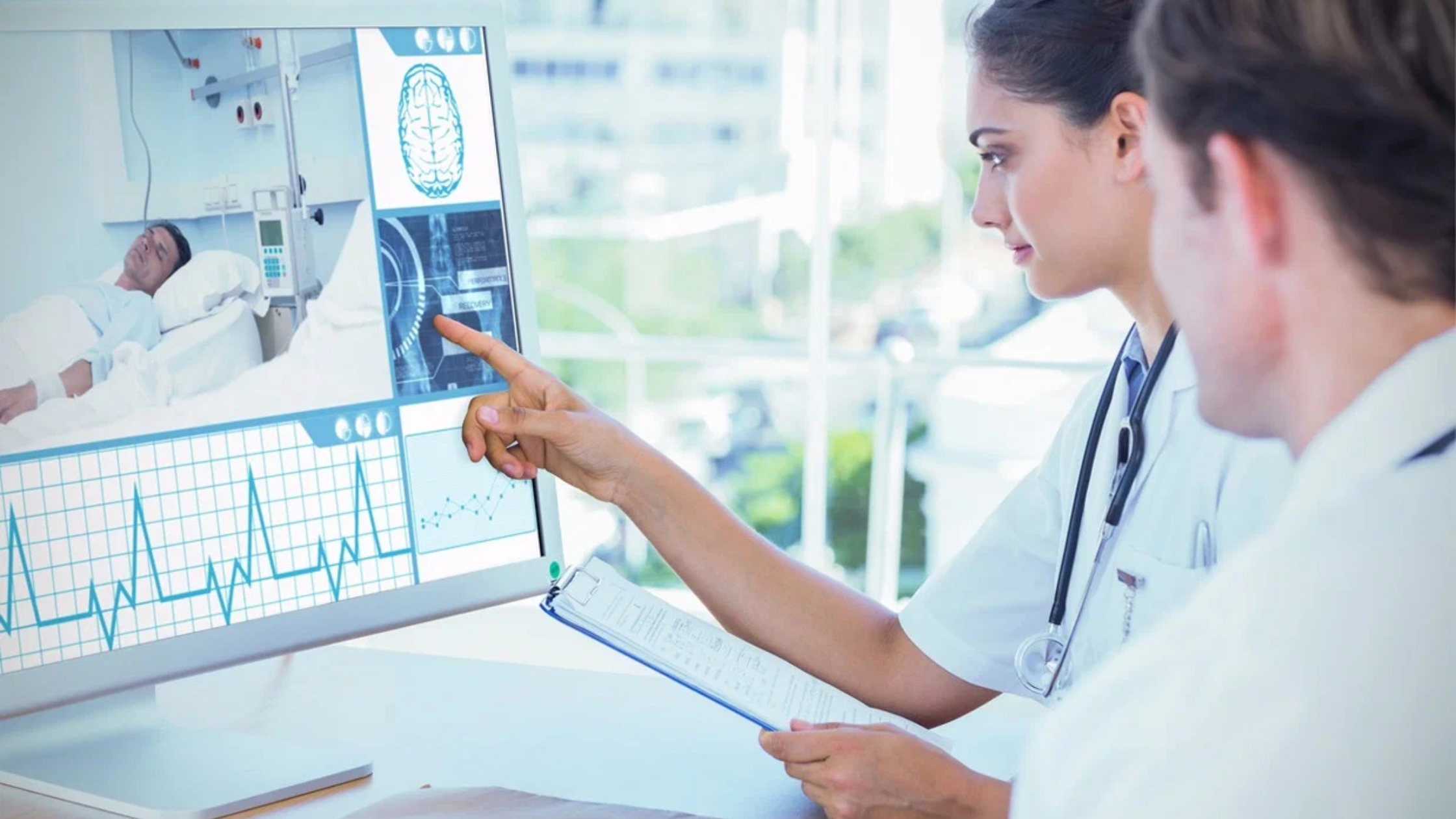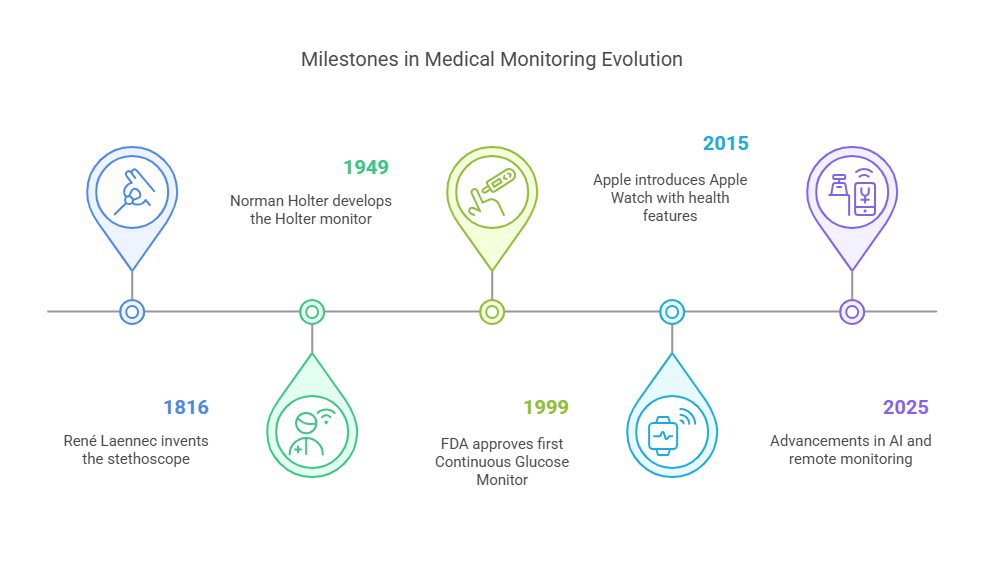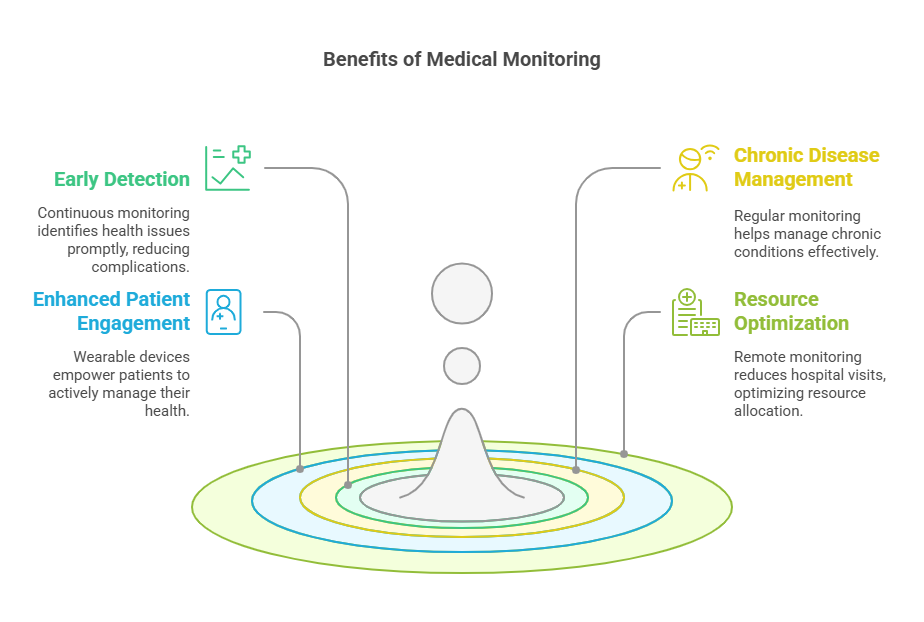What Is Medical Monitoring and Why Does It Matter?
In today's rapidly advancing healthcare landscape, medical monitoring stands as a cornerstone of patient care. From traditional hospital equipment to cutting-edge wearable devices, monitoring technologies have evolved to provide real-time insights into a patient's health status. This comprehensive guide delves into the definition, historical progression, significance, and everyday applications of medical monitoring, highlighting its pivotal role in modern medicine.
What is Medical Monitoring?
Medical monitoring refers to the continuous or periodic observation and recording of a patient's physiological parameters to assess their health status. These parameters can include heart rate, blood pressure, respiratory rate, oxygen saturation, glucose levels, and more. The primary goal is to detect any deviations from normal ranges promptly, enabling timely interventions and improving patient outcomes.
Related Blog: The Ultimate Guide to Clinical Research Monitoring
History and Evolution
The journey of medical monitoring is marked by significant milestones that have transformed patient care:
1816: René Laennec invents the stethoscope, allowing physicians to listen to internal body sounds without direct contact.
1949: Norman Holter develops the Holter monitor, enabling continuous ECG monitoring outside hospital settings.
1999: The FDA approves the first Continuous Glucose Monitor (CGM), revolutionizing diabetes management.
2015: Apple introduces the Apple Watch with health monitoring features, integrating technology into daily life.
2025: Advancements in AI and remote monitoring technologies continue to enhance patient care and preventive medicine.
Importance in Modern Healthcare
Medical monitoring plays a crucial role in contemporary healthcare for several reasons:
1. Early Detection of Health Issues: Continuous monitoring allows for the early identification of potential health problems, facilitating prompt interventions and reducing the risk of complications.
2. Chronic Disease Management: For patients with chronic conditions like diabetes or hypertension, regular monitoring helps in maintaining optimal health parameters and preventing disease progression.
3. Enhanced Patient Engagement: Wearable devices empower patients to take an active role in their health management, promoting better adherence to treatment plans.
4. Resource Optimization: Remote monitoring reduces the need for frequent hospital visits, easing the burden on healthcare facilities and allowing for better allocation of resources.
Everyday Examples of Medical Monitoring
Medical monitoring has seamlessly integrated into both clinical settings and daily life:
Wearable Devices
Modern wearables offer a range of health monitoring features:
Fitness Trackers: Monitor physical activity, heart rate, and sleep patterns.
Smartwatches: Provide ECG readings, blood oxygen levels, and even detect irregular heart rhythms.
Continuous Glucose Monitors (CGMs): Allow real-time glucose tracking for diabetics.
Blood Pressure Monitors: Enable hypertensive patients to monitor their blood pressure at home.
Hospital Settings
In clinical environments, various monitoring systems are employed:
Telemetry Units: Continuously track cardiac rhythms in patients.
Pulse Oximeters: Measure oxygen saturation levels, crucial for respiratory conditions.
ICU Monitors: Provide comprehensive monitoring of vital signs for critically ill patients.
Remote Monitoring Systems: Allow for patient observation outside traditional hospital settings, such as virtual wards.
Relate Blog: Medical Monitoring in Clinical Research
10 Lesser-Known Facts About Medical Monitoring
Historical Origins: The concept of monitoring vital signs dates back to ancient civilizations, where pulse and respiration were observed to assess health. (Source)
Biotelemetry in Wildlife: Techniques used in medical monitoring are also applied in wildlife studies to track animal health and behavior. (Source)
Smart Fabrics: Innovations in textiles have led to clothing embedded with sensors that monitor physiological parameters. (Source)
Epilepsy Monitoring: Devices like the Empatica Embrace2 can detect seizures and alert caregivers, enhancing safety for epileptic patients.
AI Integration: Artificial intelligence algorithms are increasingly used to analyze monitoring data, predicting potential health issues before they manifest.
Remote Monitoring in Rural Areas: Telemedicine and remote monitoring have significantly improved healthcare access in remote and underserved regions.
Data Privacy Concerns: The collection and transmission of health data raise important questions about privacy and data security.
Wearables in Clinical Trials: Researchers utilize wearable technology to gather real-time data during clinical studies, enhancing the accuracy of results.
Integration with Electronic Health Records (EHRs): Monitoring devices can sync with EHRs, providing healthcare providers with comprehensive patient data.
Environmental Impact: The shift towards remote monitoring reduces the carbon footprint associated with frequent hospital visits.
Explore Courses for Clinical Research Career
Courses Available:
Conclusion
Medical monitoring has become an essential pillar of modern healthcare, empowering both clinicians and patients with real-time, actionable data. From its historical roots to the latest 2025 innovations in AI and wearable tech, the field continues to transform how we approach diagnosis, treatment, and prevention. By enabling earlier interventions and better chronic disease management, medical monitoring plays a key role in improving outcomes and enhancing quality of life. At CCRPS, we recognize the value of cutting-edge medical training that keeps pace with these advancements, preparing healthcare professionals for the future of patient care.
Frequently Asked Questions (FAQs)
-
Medical monitoring is the ongoing observation of a patient’s physiological data such as heart rate, blood pressure, oxygen saturation, and more. It works through the use of specialized devices—ranging from hospital-grade equipment to wearable tech—that collect data either continuously or at intervals. This data helps detect abnormalities and supports timely medical interventions.
-
In 2025, medical monitoring is more critical than ever due to rising chronic disease rates and the shift toward preventive, personalized healthcare. With the integration of AI, remote monitoring tools, and real-time analytics, medical monitoring now allows for early detection, better management of long-term conditions, and reduced hospitalizations—all while improving patient safety and comfort.
-
Common wearable monitoring devices include:
Apple Watch and Fitbit (track heart rate, sleep, and activity)
Continuous Glucose Monitors (CGMs) for diabetes management
Smart Rings like Oura Ring (monitor temperature, heart rate variability)
Blood pressure cuffs with Bluetooth syncing
These devices allow users to monitor health metrics from home and share data with healthcare providers.
-
Yes, medical monitoring is widely used outside of clinical settings. Remote patient monitoring (RPM) and telehealth tools allow individuals to track their health from home. This is especially beneficial for elderly patients, those with chronic conditions, or individuals in rural areas who may have limited access to healthcare facilities.




